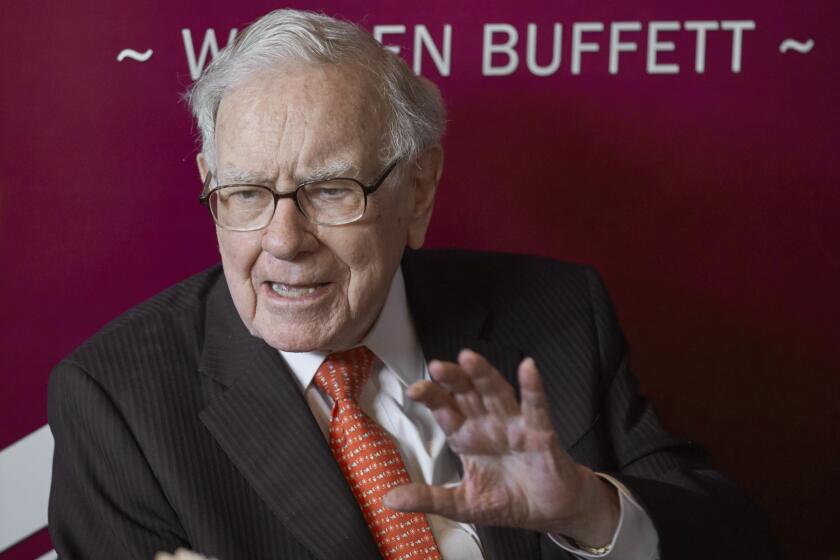Manufacturing Is the Economic Heart
- Share via
For too long a time American economists, business executives, politicians and editorial writers were overly impressed with the argument that manufacturing was not very essential to the health of an advanced industrial country like the United States. Fortunately for us all, the mythology is beginning to fade.
Business Week, reflecting the return to realism, has this to say: “Unless the United States gets its manufacturing operations back in shape--and fast--it could lose any hope of maintaining the foundation on which tomorrow’s prosperity rests.”
Back in the golden, olden days after World War II the United States was virtually unchallenged as an industrial leader. “Made in America” was a hallmark of quality. Export-oriented firms could sell whatever they made, and in most industries foreign inroads into the U.S. market fell within tolerable limits.
In the early 1970s things began to change. The economy grew more slowly. Productivity increased, but at a slower pace than our foreign competitors. Consumer goods produced in Japan and West Germany, especially, came to be regarded as both cheaper and better.
The U.S. trade balance slid increasingly into deficit, reflecting the fact that we were consuming more than we were producing. Just six years ago the United States sold $18 billion a year more to foreigners than they managed to sell to us. Now, at last count, foreign manufacturers sell $151 billion more per year in this country than we manage to export.
Prudence called for a period of belt-tightening, of living within our means while we channeled more of national income into new, more productive equipment and development of new markets.
Instead, the U.S. consumer merely used his charge accounts to buy more and more Japanese autos, cameras, video recorders and the like. Labor unions continued to demand, and get, higher and higher wages--regardless of the effect on unit costs. And U.S. corporate leaders sat on their arrogant duffs and ignored, for too long, what was happening in the world marketplace.
Businessmen, pressed by foreign competition, found it easier to move production abroad, to force take-it-or-quit pay cuts on their workers or to play the takeover game than to invest in the development and marketing of better home-made products.
Economic theoreticians told us that it didn’t matter. Manufacturing was old hat, they said. In something called the post-industrial economy, advanced countries like ours would do high-tech manufacturing, but the production of most things would be farmed out to other, less developed, countries. We would concentrate on the development of new technology and the vast new area of computer-based services.
It was baloney.
U.S. manufacturers cut costs by reducing wages, closing supposedly inefficient plants and turning to cheaper overseas suppliers. But the service sector didn’t perform as advertised.
Services include everything from hotel clerks, fast-food cooks and truck drivers to computer programmers, airline pilots, lawyers, accountants and insurance adjusters.
The service sector did indeed produce a lot of new jobs. But most were in the low end of the wage scale. According to a study by the Joint Economic Committee, almost half paid $7,000 a year or less.
The results have been felt squarely in our pocketbooks.
Your typical 30-year-old male actually earned one-fourth less last year than in 1973, after adjustment for inflation. The pain has been eased by charge-account buying and by the mass entry of women into the work force. But the extra paycheck has not allowed the average family to live any better. It just means that most families need two breadwinners now to produce the same standard of living that one person provided before.
Indeed, the median household income is lower now than in the early 1970s. And a large number of Americans, especially single-earner families headed by women, are fighting a losing battle against poverty. The gap between rich and poor is getting wider, with alarming implications for social and political stability in the years ahead.
More and more economists recognize that we can’t work our way out of this hole with a service-based economy, that healthy, home-based manufacturing is essential even to a robust service sector.
Two UC Berkeley professors, Stephen S. Cohen and John Zysman, make a persuasive case in the latest issue of California Management Review. As they observe, it is misleading to talk about manufacturing as providing only 20% of non-farm employment. If you take into account the service-sector employees whose jobs depend squarely on American manufacturing, manufacture-dependent employment is at least 50%.
There are the truckers who move semi-finished goods from plant to plant, the folks who do maintenance and repair on production equipment, the factory-level publicity and accounting staffs, the insurance companies and law firms that handle workmen’s compensation and the like.
All these jobs are counted in the service sector, but they are eliminated when production goes overseas.
U.S. manufacturers already are showing signs of a comeback. Quality has become the new buzzword. Some companies are experimenting with flexible production techniques, which emphasize quicker idea-to-product cycles and the creative contributions that can be made by respected, well-rewarded workers.
Productivity gains are on the rise, but so far not by enough to overcome the competitive advantage of Japan, West Germany and other countries that never kidded themselves into thinking that manufacturing didn’t matter.
If the U.S. competitive edge is to be regained, most experts agree, Americans must understand the need for investment of more money in education and civilian research and development, as distinct from military R&D.; Corporate managers must worry less about making profits through financial manipulation and more about designing, producing and marketing a better mousetrap.
The bottom line is that Americans, as a society, must again look beyond short-term individual and corporate gain to what is good for the country, which is all of us. At least the problem is now being recognized. That alone is a step forward.
More to Read
Inside the business of entertainment
The Wide Shot brings you news, analysis and insights on everything from streaming wars to production — and what it all means for the future.
You may occasionally receive promotional content from the Los Angeles Times.










